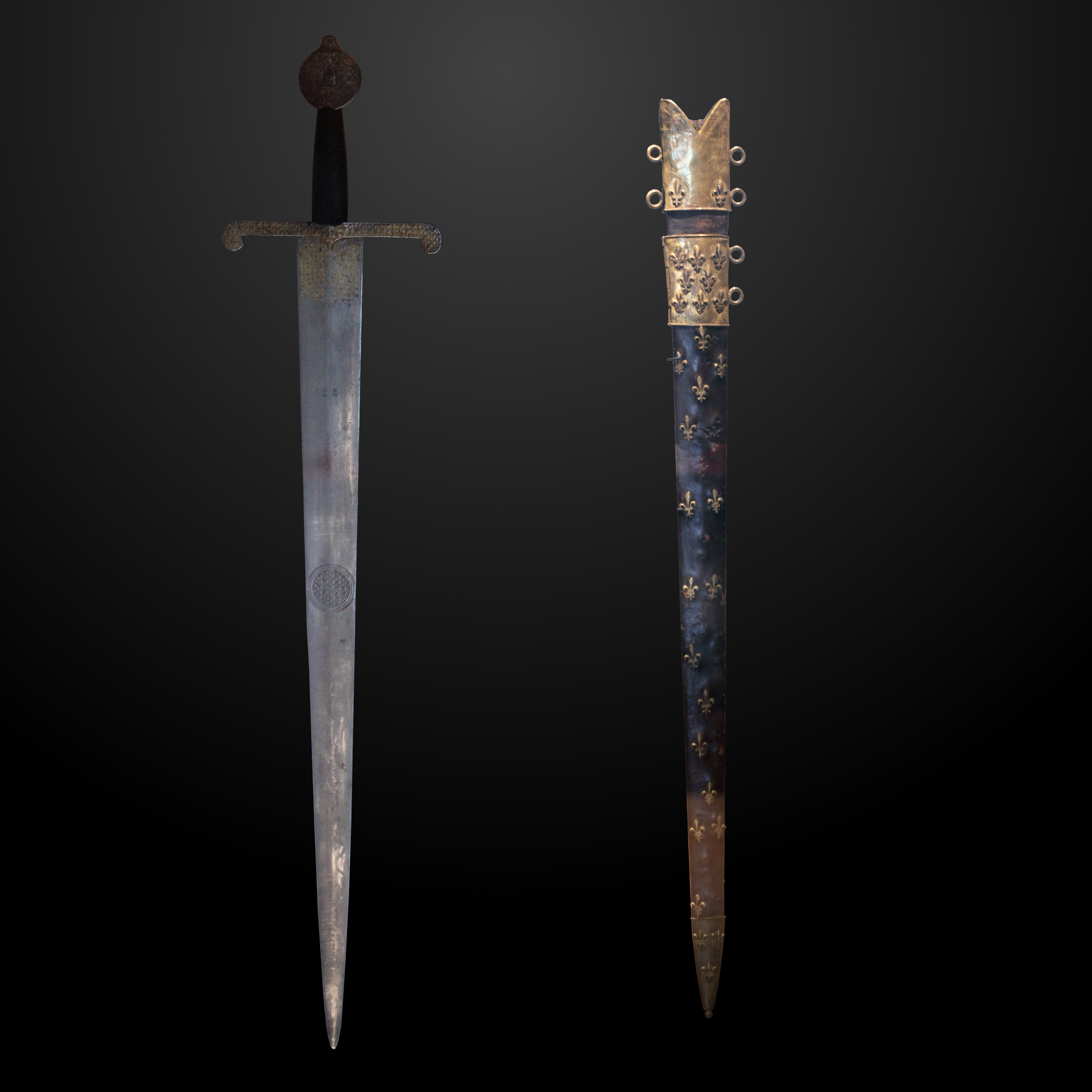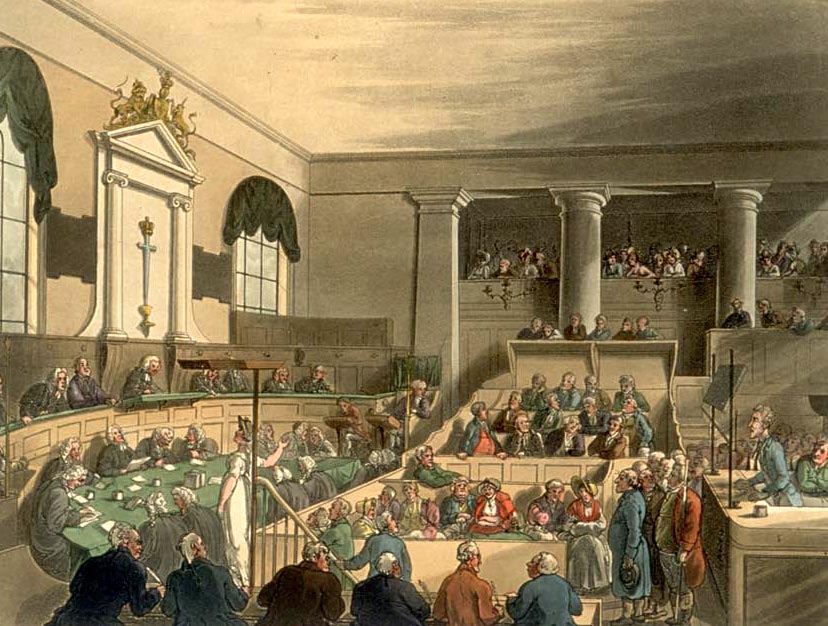|
Constable Of France
The Constable of France (, from Latin for 'count of the stables') was lieutenant to the King of France, the first of the original five Great Officers of the Crown (along with seneschal, chamberlain, butler, and chancellor) and the commander-in-chief of the Royal Army. He was, at least on paper, the highest-ranking member of the French nobility. The was also responsible for military justice and served to regulate the Chivalry. His jurisdiction was called the Constabulary (; or in modern French orthography which sticks closer to the correct pronunciation: ). The office was established by King Philip I in 1060 AD, with Alberic becoming the first Constable. The office was abolished in 1627, with an edict, by Cardinal Richelieu, upon the death of , in order to strengthen the immediate authority of the King over his army. The position was officially replaced by the purely ceremonial title "Dean of Marshals" (), who was in fact the most senior "Marshal of France" (); as the word ... [...More Info...] [...Related Items...] OR: [Wikipedia] [Google] [Baidu] |
Marshal Of France
Marshal of France (, plural ') is a French military distinction, rather than a military rank, that is awarded to General officer, generals for exceptional achievements. The title has been awarded since 1185, though briefly abolished (1793–1804) and for a period dormant (1870–1916). It was one of the Great Officers of the Crown of France during the and Bourbon Restoration in France, Bourbon Restoration, and one of the Grand Dignitaries of the French Empire, Grand Dignitaries of the Empire during the First French Empire (when the title was Marshal of the Empire, not Marshal of France). A Marshal of France displays seven stars on each shoulder strap. A marshal also receives a Baton (military), baton – a blue cylinder with stars, formerly fleur-de-lis, fleurs-de-lis during the monarchy and French Imperial Eagle, eagles during the First French Empire. The baton bears the Latin inscription of ', which means "terror in war, ornament in peace". Between the end of the 16th century a ... [...More Info...] [...Related Items...] OR: [Wikipedia] [Google] [Baidu] |
Court Of Chivalry
His Majesty's High Court of Chivalry is a civil law (as opposed to common law) court in English and Welsh law with jurisdiction over matters of heraldry. The court has been in existence since the fourteenth century; however, it rarely sits. The sole judge is now the hereditary Earl Marshal of England, the Duke of Norfolk, though if not a professional lawyer, he normally appoints a professional lawyer as his lieutenant or surrogate. In Scotland, these types of cases are heard in the Court of the Lord Lyon, which is a standing civil and criminal court, with its own judge – the Lord Lyon King of Arms and its own (public prosecutor) under the Scottish legal system.Innes of Learney & Innes of Edingight, p.7 History The court was historically known as the ''Curia Militaris'', the ''Court of the Constable and the Marshal'', or the ''Earl Marshal's Court''.G. D. Squibb, ''The High Court of Chivalry: A Study of the Civil Law in England'', Oxford, 1959, pp.2–3The Law of Arms ... [...More Info...] [...Related Items...] OR: [Wikipedia] [Google] [Baidu] |
Court Of The Lord Constable
A court is an institution, often a government entity, with the authority to adjudicate legal disputes between Party (law), parties and Administration of justice, administer justice in Civil law (common law), civil, Criminal law, criminal, and Administrative law, administrative matters in accordance with the rule of law. Courts generally consist of Judge, judges or other judicial officers, and are usually established and dissolved through legislation enacted by a legislature. Courts may also be established by constitution or an equivalent constituting instrument. The practical authority given to the court is known as its jurisdiction, which describes the court's power to decide certain kinds of questions, or Petition, petitions put to it. There are various kinds of courts, including trial courts, appellate courts, administrative courts, international courts, and tribunals. Description A court is any person or institution, often as a government institution, with the authori ... [...More Info...] [...Related Items...] OR: [Wikipedia] [Google] [Baidu] |
Marshal Of France
Marshal of France (, plural ') is a French military distinction, rather than a military rank, that is awarded to General officer, generals for exceptional achievements. The title has been awarded since 1185, though briefly abolished (1793–1804) and for a period dormant (1870–1916). It was one of the Great Officers of the Crown of France during the and Bourbon Restoration in France, Bourbon Restoration, and one of the Grand Dignitaries of the French Empire, Grand Dignitaries of the Empire during the First French Empire (when the title was Marshal of the Empire, not Marshal of France). A Marshal of France displays seven stars on each shoulder strap. A marshal also receives a Baton (military), baton – a blue cylinder with stars, formerly fleur-de-lis, fleurs-de-lis during the monarchy and French Imperial Eagle, eagles during the First French Empire. The baton bears the Latin inscription of ', which means "terror in war, ornament in peace". Between the end of the 16th century a ... [...More Info...] [...Related Items...] OR: [Wikipedia] [Google] [Baidu] |
Constabulary
Constabulary may have several definitions: *A civil, non-paramilitary (police) force consisting of police officers called constables. This is the usual definition in the United Kingdom, in which all county police forces once bore the title (and some still do). Constables also exist in some U.S. states including Texas and Pennsylvania. *In English-speaking Canada, the starting rank of all police officers is Constable. The provincial police service of Newfoundland and Labrador is the Royal Newfoundland Constabulary. This term reflects the force’s history of having been modelled after the Royal Irish Constabulary. In this case, Constabulary is used in the same sense in which it is used in the UK. *A large civil police force organised and trained along military lines, which may contain paramilitary elements. This is the usual definition in places outside Great Britain such as the former Royal Irish Constabulary, the former Royal Ulster Constabulary, Royal Newfoundland Constabulary ... [...More Info...] [...Related Items...] OR: [Wikipedia] [Google] [Baidu] |
Marshal
Marshal is a term used in several official titles in various branches of society. As marshals became trusted members of the courts of Middle Ages, Medieval Europe, the title grew in reputation. During the last few centuries, it has been used for elevated offices, such as in military rank and civilian law enforcement. In most countries, the rank of Field marshal, Marshal is the highest Army rank (equivalent to a five-star General of the Army (United States), General of the Army in the United States). Etymology ''Marshal'' is an ancient loanword from Old French ''mareschal'' (cf. Modern French ''maréchal''), which in turn is borrowed from Old Frankish *' "stable boy, keeper, servant", attested by Medieval Latin ''mariscalcus'' from a Proto-Germanic ''*maraχskalkaz'' (cf. Old High German ''marahschalh'')p. 93b-283a, T. F. Hoad, ''The Concise Oxford Dictionary of English Etymology'' (Oxford University Press, 1993) being still evident in Middle Dutch ''maerscalc'', ''marscal'', ... [...More Info...] [...Related Items...] OR: [Wikipedia] [Google] [Baidu] |
Kingdom Of France
The Kingdom of France is the historiographical name or umbrella term given to various political entities of France in the Middle Ages, medieval and Early modern France, early modern period. It was one of the most powerful states in Europe from the High Middle Ages to 1848 during its dissolution. It was also an early French colonial empire, colonial power, with colonies in Asia and Africa, and the largest being New France in North America geographically centred around the Great Lakes. The Kingdom of France was descended directly from the West Francia, western Frankish realm of the Carolingian Empire, which was ceded to Charles the Bald with the Treaty of Verdun (843). A branch of the Carolingian dynasty continued to rule until 987, when Hugh Capet was elected king and founded the Capetian dynasty. The territory remained known as ''Francia'' and its ruler as ('king of the Franks') well into the High Middle Ages. The first king calling himself ('King of France') was Philip II of Fr ... [...More Info...] [...Related Items...] OR: [Wikipedia] [Google] [Baidu] |
Peerage Of France
The Peerage of France () was a hereditary distinction within the French nobility which appeared in 1180 during the Middle Ages. The prestigious title and position of Peer of France () was held by the greatest, highest-ranking members of the French nobility. French peerage thus differed from British peerage (to whom the term "baronage", also employed as the title of the lowest noble rank, was applied in its generic sense), for the vast majority of French nobles, from baron to duke, were not peers. The title of ''Peer of France'' was an extraordinary honour granted only to a small number of dukes, counts, and princes of the Roman Catholic Church. It was analogous to the rank of Grandee of Spain in this respect. The distinction was abolished in 1789 during the French Revolution, but it reappeared in 1814 at the time of the Bourbon Restoration in France, Bourbon Restoration, which followed the fall of the First French Empire, when the Chamber of Peers (France), Chamber of Peers was ... [...More Info...] [...Related Items...] OR: [Wikipedia] [Google] [Baidu] |
Great Seneschal
The word ''seneschal'' () can have several different meanings, all of which reflect certain types of supervising or administering in a historic context. Most commonly, a seneschal was a senior position filled by a court appointment within a royal, ducal, or noble household during the Middle Ages and early Modern period – historically a steward or majordomo of a medieval great house. In a medieval royal household, a seneschal was in charge of domestic arrangements and the administration of servants, which, in the medieval period particularly, meant the seneschal might oversee hundreds of laborers, servants and their associated responsibilities, and have a great deal of power in the community, at a time when much of the local economy was often based on the wealth and responsibilities of such a household. A second meaning is more specific, and concerns the late medieval and early modern nation of France, wherein the seneschal () was also a royal officer in charge of justice and con ... [...More Info...] [...Related Items...] OR: [Wikipedia] [Google] [Baidu] |
Fleur-de-lis
The ''fleur-de-lis'', also spelled ''fleur-de-lys'' (plural ''fleurs-de-lis'' or ''fleurs-de-lys''), is a common heraldic charge in the (stylized) shape of a lily (in French, and mean and respectively). Most notably, the ''fleur-de-lis'' is depicted on the flag of Quebec and on the traditional coat of arms of France that was used from the High Middle Ages until the French Revolution in 1792, and then again in brief periods in the 19th century. This design still represents France and the House of Bourbon in the form of Heraldry#Marshalling, marshalling in the arms of Coat of arms of Spain, Spain, Coat of arms of Quebec, Quebec, and Coat of arms of Canada, Canada — for example. Other European nations have also employed the symbol. The ''fleur-de-lis'' became "at one and the same time, religious, political, dynastic, artistic, emblematic, and symbolic", especially in French heraldry. The Mary, mother of Jesus, Virgin Mary and Saint Joseph are among saints often depicted wit ... [...More Info...] [...Related Items...] OR: [Wikipedia] [Google] [Baidu] |
Charlemagne
Charlemagne ( ; 2 April 748 – 28 January 814) was List of Frankish kings, King of the Franks from 768, List of kings of the Lombards, King of the Lombards from 774, and Holy Roman Emperor, Emperor of what is now known as the Carolingian Empire from 800, holding these titles until his death in 814. He united most of Western Europe, Western and Central Europe, and was the first recognised emperor to rule from the west after the fall of the Western Roman Empire approximately three centuries earlier. Charlemagne's reign was marked by political and social changes that had lasting influence on Europe throughout the Middle Ages. A member of the Frankish Carolingian dynasty, Charlemagne was the eldest son of Pepin the Short and Bertrada of Laon. With his brother, Carloman I, he became king of the Franks in 768 following Pepin's death and became the sole ruler three years later. Charlemagne continued his father's policy of protecting the papacy and became its chief defender, remo ... [...More Info...] [...Related Items...] OR: [Wikipedia] [Google] [Baidu] |



